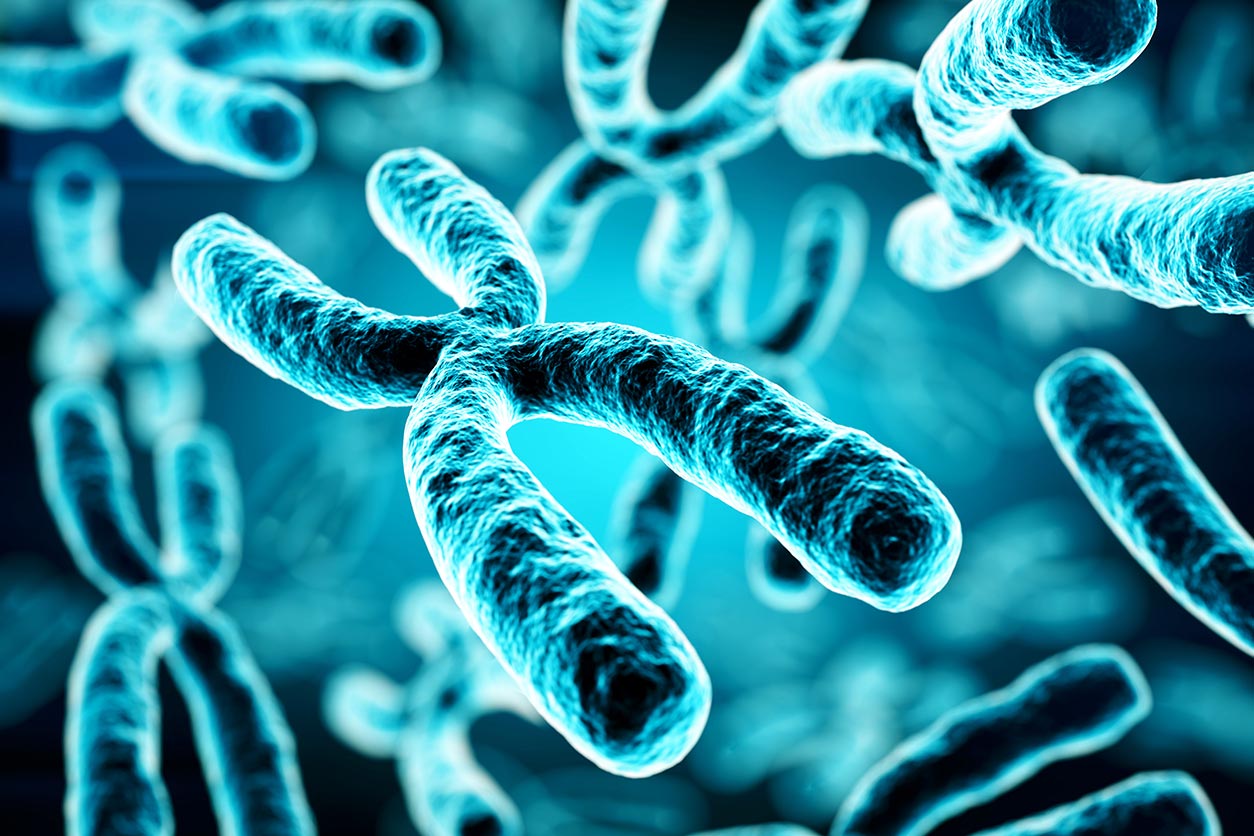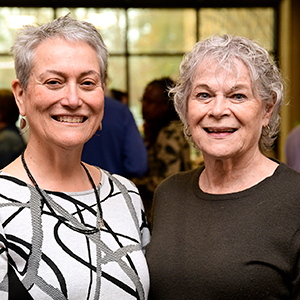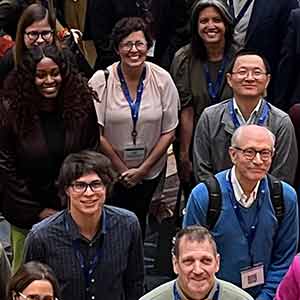Exposure to environmental and social stressors can cause molecular changes that lead to poor health outcomes, but identifying which changes are true indicators of adverse effects or potential risk is a challenge. Environmental health scientists say that more knowledge about such biological indicators — called biomarkers of effect — could shed light on the progression of certain diseases and spur medical advances.
Researchers from academia, government, and industry shared their latest findings on biomarkers of effect at an NIEHS-sponsored virtual meeting August 12-13. The scientists discussed ways to develop new biomarkers and validate their usefulness, and they examined how biomarker analysis could advance the field of health disparities and help disadvantaged populations.
 Several participants discussed how to merge insights from genome research with environmental health science to increase understanding of individual susceptibility to disease.
Several participants discussed how to merge insights from genome research with environmental health science to increase understanding of individual susceptibility to disease.The meeting was hosted by the National Academies of Sciences, Engineering, and Mathematics Standing Committee on the Use of Emerging Science for Environmental Health Decisions. NIEHS, which funds the standing committee’s workshops, was well represented.
Studying telomeres, arsenic-induced diabetes
 “I think that this meeting is both timely and critically important for the environmental health sciences community,” said Woychik. (Photo courtesy of Steve McCaw)
“I think that this meeting is both timely and critically important for the environmental health sciences community,” said Woychik. (Photo courtesy of Steve McCaw)“NIEHS has a longstanding interest in the development of biomarkers,” said Rick Woychik, Ph.D., director of the institute and the National Toxicology Program(https://ntp.niehs.nih.gov/), in his kickoff speech.
He pointed to several NIEHS-funded projects, such as a collaboration with the National Institute on Aging to use telomere length to gauge environmental exposures, psychosocial stress, and disease susceptibility. Telomeres form on each end of a chromosome, protecting genetic information. They shorten with age, which can increase vulnerability to various health problems.
Woychik also highlighted work by NIEHS Superfund Research Program grant recipient Rebecca Fry, Ph.D., from the University of North Carolina at Chapel Hill (UNC). Fry and her colleagues study the problem of diabetes resulting from early-life exposure to arsenic. “Her laboratory at UNC has identified a number of DNA methylation markers that are altered in individuals with prenatal exposure to arsenic,” Woychik noted.
Biomarkers of brain injury, immunotoxicity
Fry is one of several attendees who recorded scientific presentations that were shared in advance of the meeting, both to help the workshop run smoothly and spark ideas for debate during the live sessions. Below is a sampling of the pre-recorded talks:
- “Inflammation in Peripheral Blood and Tissues and an Indicator of Neurologic Effects and Brain Injury,” by NIEHS grantee Tomas Guilarte, Ph.D., from Florida International University.
- “Biomarkers of Immunotoxicity and Applicability to PFAS [per- and polyfluoroalkyl substances] and Other Environmental Toxicants,” by Jamie DeWitt, Ph.D., from East Carolina University, also an institute grantee.
- “Development, Validation, and Application of an in vitro Transcriptomic Biomarker for Genotoxicity Testing,” by Carole Yauk, Ph.D., from the University of Ottawa.
Brian Chorley, Ph.D., from the U.S. Environmental Protection Agency, pointed to another potentially useful biomarker. “MicroRNAs are small, noncoding RNAs that target gene expression [and] gene translation,” said Chorley, a former NIEHS postdoctoral fellow(https://factor.niehs.nih.gov/2010/june/spotlight-senior.cfm). “When you see changes in microRNAs, they are indicative of a sort of robust biological change that’s happening within the cell,” he explained.
Accounting for individual variability
 “Biomarkers of effect may be particularly useful to evaluate intervention effectiveness if they are sufficiently sensitive and responsive to social conditions,” said Jackson. (Photo courtesy of Steve McCaw)
“Biomarkers of effect may be particularly useful to evaluate intervention effectiveness if they are sufficiently sensitive and responsive to social conditions,” said Jackson. (Photo courtesy of Steve McCaw)“There’s still so much that needs to be done, both in the discovery of biomarkers and in their validation as sentinels of environmental exposures,” said Woychik. “Each of us responds to the environment [differently], and we have to become more sophisticated in how we develop and validate biomarkers that factor individual genetic, epigenetic, metabolic, and other biologic variability into the equation.”
According to Chandra Jackson, Ph.D., an epidemiologist at NIEHS, part of that equation involves health disparities. For biomarkers to help inform interventions in disadvantaged communities, she said, scientists must understand how internal biological signals can be influenced by external environmental factors such as chemicals in one’s diet, housing structures, and even racism.
Jackson suggested that research on the exposome — the totality of an individual’s environmental exposures, whether chemical or social — can strengthen and leverage the development of biomarkers.
“The exposome, fortunately, represents an unprecedented opportunity to more comprehensively investigate the fundamental causes of health disparities by better characterizing a broad range of environmental as well as social exposure and response pathways,” she noted. “That can help distinguish social vulnerability leading to biological changes from innate genetic or biological susceptibility.”
Alison Harrill, Ph.D., a geneticist at NIEHS, served on the event organizing committee. She moderated a panel following Jackson’s talk that delved into how to incorporate population variability and diversity into biomarker analysis.









